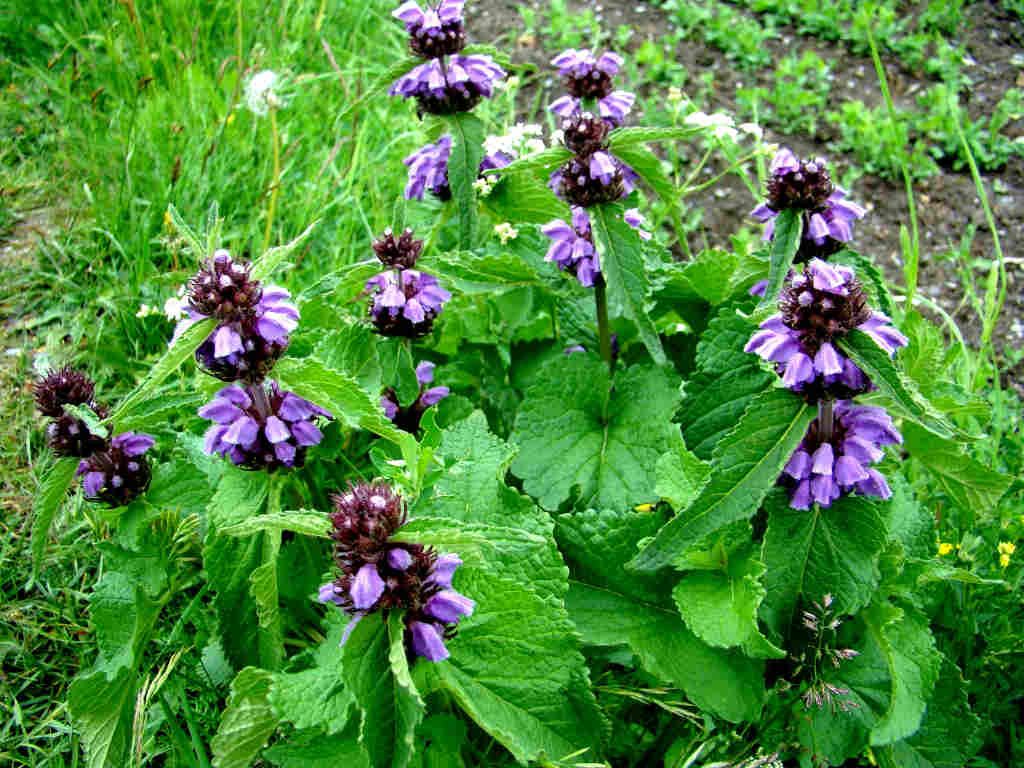
Phlomis bracteosa (Purple Jerusalem sage)
Phlomis bracteosa, commonly known as Purple Jerusalem Sage, is a striking perennial plant found in the Himalayan region, particularly in areas like Himachal Pradesh and the Great Himalayan National Park (GHNP). This herbaceous plant is highly valued for its ornamental beauty, medicinal properties, and its role in maintaining the delicate ecological balance of alpine ecosystems.
Natural Habitat and Occurrence in GHNP
Purple Jerusalem Sage thrives in temperate and subalpine regions at high altitudes. It is commonly found at elevations ranging from 2,000 to 3,500 meters in the Himalayan foothills. In the Great Himalayan National Park, it flourishes in rocky slopes, meadows, and forest edges, where it enjoys the well-drained soils and moderate sunlight of the region. The plant’s ability to adapt to harsh mountain climates makes it a key species in the park’s biodiversity.
Botanical Description
Phlomis bracteosa is a woody-stemmed herb that produces vibrant purple to lavender-colored flowers, which bloom in whorls along the plant’s tall, spiked stems. These flowers are not only visually striking but also attract a variety of pollinators, such as bees and butterflies. The leaves are large, downy, and oval-shaped, with a characteristic silvery-gray appearance. The plant can reach heights of 2 to 3 feet and often forms dense clusters in its native habitat. It is well-known for its resilient nature, thriving in rocky, dry soils with minimal water.
Medicinal Uses
Purple Jerusalem Sage has been used for centuries in traditional herbal medicine for its healing properties. The plant contains various bioactive compounds with anti-inflammatory, antioxidant, and antibacterial effects. It has been traditionally used to:
-
Treat respiratory issues, including coughs and bronchitis
-
Ease digestive discomforts, such as indigestion and bloating
-
Promote wound healing and act as a topical antiseptic
-
Relieve symptoms of anxiety and stress due to its calming properties
While it has a long history of use, consultation with a healthcare provider is recommended before using it for medicinal purposes, as the plant’s strong bioactive compounds may interact with other medications.
Ecological Role
In the wild, Phlomis bracteosa plays a vital role in the ecosystem of the Great Himalayan National Park by contributing to the stabilization of soil and preventing erosion, especially on rocky slopes and hillsides. Its deep root systems help bind the soil together, reducing the risk of landslides in the region. The plant also provides food and habitat for a variety of pollinators and other wildlife species, including bees, butterflies, and small mammals.
| Local name | Purple Jerusalem Sage |
| Botanical name | Phlomis bracteosa |
| Family | Lamiaceae (mint family) |
| Description and uses | Purple Jerusalem Sage is an erect hairy perennial, which grows up to 80 cm tall. Leaves are heart-shaped, toothed and have stalks. Each leaf pair occurs at right angles to the next. Pink-purple flowers appear in few large whorls in an interrupted spike. All parts are covered with hairs. Bracts are linear-lancelike. |
Conservation Status
Although Phlomis bracteosa is not currently listed as endangered, it faces certain threats in the wild, including habitat degradation and the over-collection of its medicinal parts. Conservation efforts in the Great Himalayan National Park are critical to ensure that this beautiful and ecologically important plant continues to thrive in its natural environment. Sustainable harvesting practices and habitat restoration initiatives are essential for the long-term survival of Purple Jerusalem Sage.
Conclusion
Phlomis bracteosa (Purple Jerusalem Sage) is a unique and important plant in the Great Himalayan National Park, offering a wealth of medicinal benefits and playing a key role in the region’s ecological balance. Its striking flowers, medicinal uses, and ability to thrive in harsh environments make it an essential part of the Himalayan flora. Efforts to conserve its habitat and promote sustainable harvesting will ensure that this plant remains a part of the park’s rich biodiversity for generations to come.



